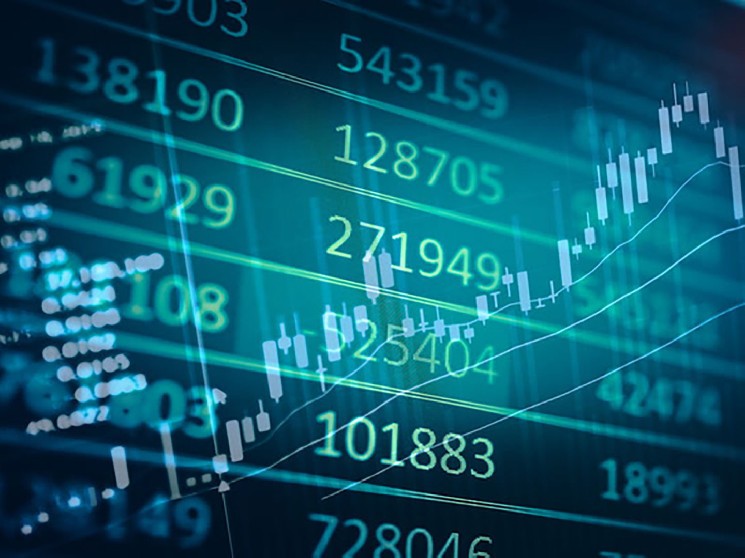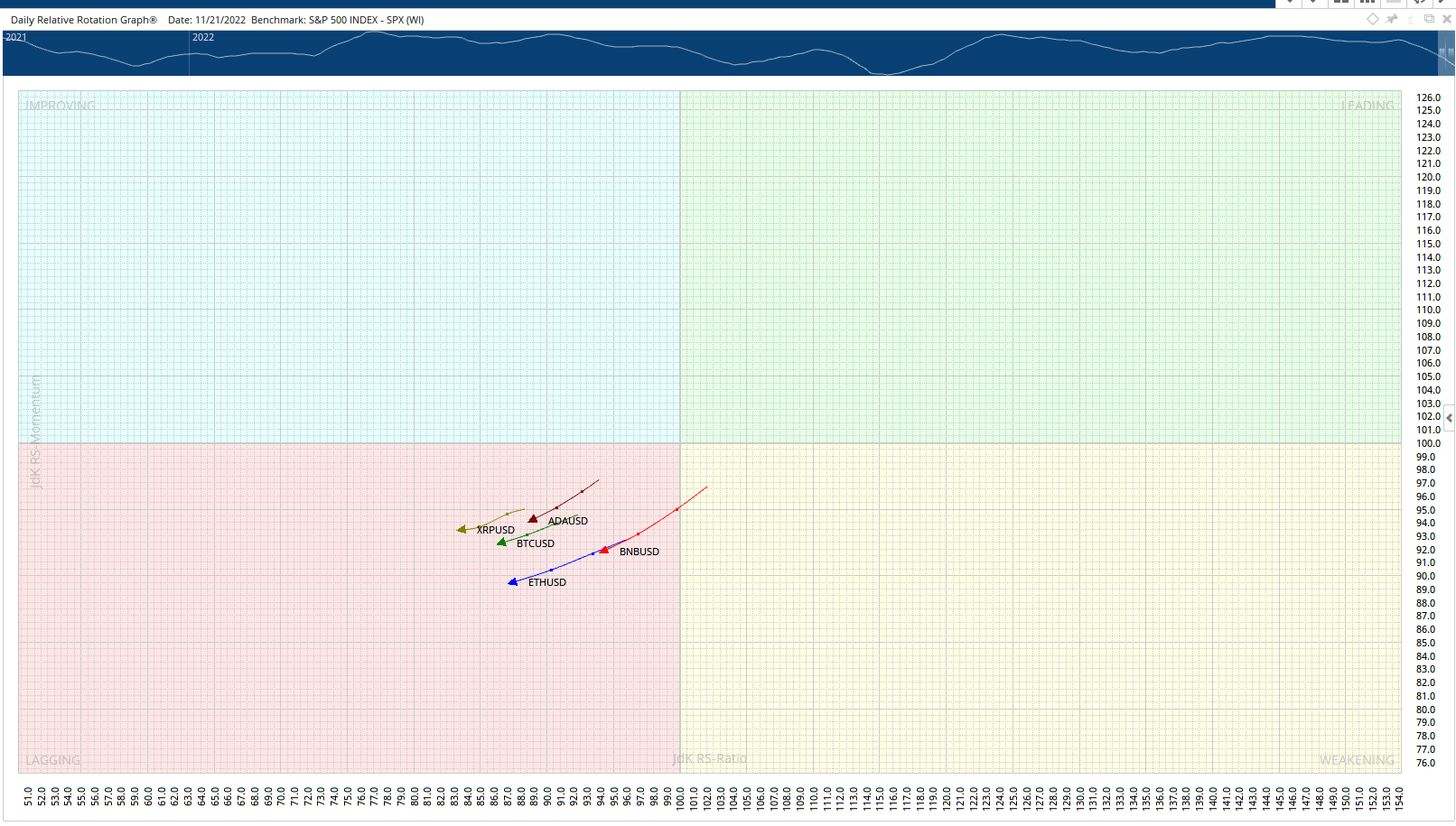Crypto Market Analysis: Crypto Investors See Few Encouraging Signs

Any dataset of the most recent quarterly returns for crypto assets would undoubtedly reveal a sea of red, the latest chapter in a year of epic declines.
Even among the few cryptocurrencies that gained ground, the news is grim. Their price increases seem more like isolated circumstances rather than the initial hints of a trend upward, as one popular investment tool, Relative Rotation Graphs, indicates. RRGs offer visual representations of asset trends and can help investors foresee shifts in pricing – positive and negative.
Assets with positive returns
Looking at the top 50 assets by market capitalization (Messari) shows the following with positive returns over the most recent 90 days. (The list excludes stablecoins and LUNC.)
- Dogecoin (DOGE) 13.84%
- Polygon (MATIC)- 3.93%
- Litecoin (LTC)- 24.03%
- The Open Network (TONCOIN) — 20.96%
- Quant Network (QNT) — 0.80%
- OKB (OKB) — 16.07%
- Trust Wallet Token (TWT)- 112.83%
- Ripple (XRP) — 7.39%
XRP, DOGE, and LTC all act primarily as currencies, but otherwise, each coin on the above list fits within a distinct category, so their gains cannot be attributed to particular events or industry-specific trends.
TWT is the biggest outlier with a 90 day-return of nearly 113%. A closer look shows that much of TWT’s gains occurred over the most recent 11 days. Prices increased from an open of $1.04 on Nov. 10 to as high as $2.74 on Nov. 14. Prices have since retreated to $2.23, and volume has waned substantially as well.
TWT’s 24-hour volume ranks just 29th among assets at $42 million in real volume daily. By comparison, BTC’s daily volume is $3.7 billion. The low volume by comparison is noteworthy, as lower activity can lead to wider price swings.
What RRGs are showing
Developed by Julius de Kempanaer, RRGs allow users to view asset performance in four distinct quadrants.
- Leading — High relative performance and momentum
- Weakening — Strong relative performance and slowing momentum
- Lagging — Weak relative performance and momentum
- Improving — Weak relative performance but increasing momentum
In orderly markets, assets tend to move through each quadrant sequentially.
A strategy often employed in using RRG’s is to identify assets moving into the improving quadrant, with the expectation that in short order it will begin leading the benchmark.
If using RRG’s in isolation, there doesn’t appear to be much opportunity in the above set, as six of the eight assets are either lagging the SPX or weakening versus the SPX. OKB and TWT are currently leading, but TWT’s status is driven by extremely recent price activity.







 Bitcoin
Bitcoin  Ethereum
Ethereum  Tether
Tether  USDC
USDC  TRON
TRON  Dogecoin
Dogecoin  Cardano
Cardano  Bitcoin Cash
Bitcoin Cash  LEO Token
LEO Token  Chainlink
Chainlink  Zcash
Zcash  Monero
Monero  Stellar
Stellar  Litecoin
Litecoin  Hedera
Hedera  Dai
Dai  Cronos
Cronos  OKB
OKB  Tether Gold
Tether Gold  Ethereum Classic
Ethereum Classic  KuCoin
KuCoin  Gate
Gate  Algorand
Algorand  Cosmos Hub
Cosmos Hub  VeChain
VeChain  Tezos
Tezos  Dash
Dash  TrueUSD
TrueUSD  Stacks
Stacks  IOTA
IOTA  Basic Attention
Basic Attention  Decred
Decred  Theta Network
Theta Network  NEO
NEO  Synthetix
Synthetix  Qtum
Qtum  0x Protocol
0x Protocol  Ravencoin
Ravencoin  DigiByte
DigiByte  Nano
Nano  Zilliqa
Zilliqa  Holo
Holo  Siacoin
Siacoin  Numeraire
Numeraire  Waves
Waves  Ontology
Ontology  BUSD
BUSD  Enjin Coin
Enjin Coin  Status
Status  Hive
Hive  Pax Dollar
Pax Dollar  Lisk
Lisk  Steem
Steem  Huobi
Huobi  OMG Network
OMG Network  NEM
NEM  Bitcoin Gold
Bitcoin Gold  Augur
Augur  HUSD
HUSD  Bitcoin Diamond
Bitcoin Diamond